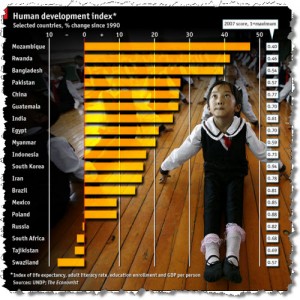Human development Index: A legitimate measure?
Many attempts have been used to indicate the development and progress of nations. One of the more prominent and well-known source is the Human Development Index. It introduced new ways of measuring development by combining factors such like: life expectancy, educational attainment and income into a composite human development index, the HDI.
HDI is composed of 3 parts: Education, Health and Living Standards; all of which are measured by smaller indicators. For example, the education component is measured “by mean of years of schooling for adults aged 25 years and expected years of schooling for children of school entering age”. As with a lot of statistical data, a lot of information may not be recorded accurately, or at all.
Browsing the official website, one can quickly spot problems that remain unsolved or unexplored deliberately. Under the FAQs, one question is, “Why does the HDI not include dimensions of participation, gender and equality?” One would think that those components would be key components to determining the progress of a society. As an answer to the question, HDI offers the following explanation,
The policy of the Human Development Report Office has always been to construct additional complementary composite indices for covering some of the “missing” dimensions in the HDI. Gender disparity, inequality and human deprivation are measured by other indices (see Gender Inequality Index, Multidimensional Poverty Index and Inequality-adjusted HDI).
(Please see website: http://hdr.undp.org/en/statistics/hdi/)
It is therefore an incomprehensive and inconclusive index, if it undermines fundamental components such as universal suffrage, and gender issues.


0 comments
Kick things off by filling out the form below.
Leave a Comment